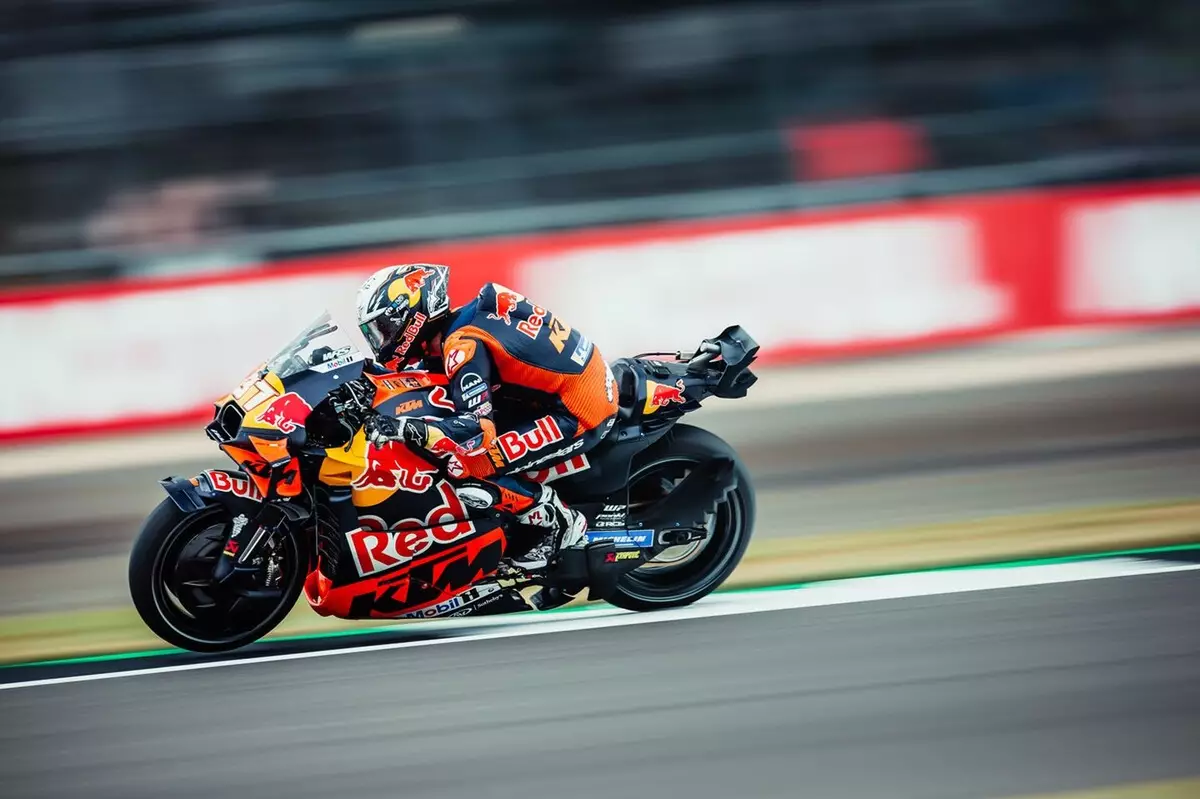The 2025 MotoGP season has proven to be a rollercoaster for KTM, the Austrian motorcycle manufacturer facing both promising moments and disappointing lows. As the championship progresses, it’s apparent that KTM’s competitive edge is not fully realized, particularly when evaluating the performances of their factory riders. With Pedro Acosta positioned ninth and Brad Binder trailing at 14th in the standings, the internal pressures are palpable. The mood within the factory reflects a blend of frustration and cautious hope, revealing a team grappling with both performance expectations and future possibilities.
Acosta, following impressive podium finishes in Aragon last year, is attempting to temper expectations rather than succumb to the pressure of past successes. His pragmatic approach highlights a key aspect of sports mentality: focus on the process rather than solely on results. His acknowledgment of the formidable competitors—like Francesco Bagnaia—serves as a reminder that in the world of MotoGP, raw speed and strategy can significantly sway race outcomes. Acosta’s commentary about the need to close the gap to the podium speaks volumes about the team’s current quest for competitive consistency.
The Challenge of Qualifying
Acosta’s candid remarks regarding KTM’s qualifying performance reveal the underlying tensions in the team. Describing it as “a disaster” emphasizes the critical nature of qualifying positions within MotoGP, where the differences between 12th, 14th, or even 19th can radically alter race day strategies and outcomes. Such blunt assessments raise questions about the team’s readiness to compete at the highest levels and highlight an area of significant concern that might be overlooked by team management.
This discontent isn’t just limited to Acosta; Binder’s sentiments echo the struggles of their qualifying sessions. The necessity of improving during these critical rounds is evident and suggests that the team may need to recalibrate its approach to practice sessions leading up to qualifying. The apparent gap in performance does not simply reflect the riders’ abilities but rather an entire operational philosophy that must evolve to meet the demands of the sport.
A Glimpse into Future Developments
In a bid for rejuvenation, Binder and others visited KTM’s headquarters in Mattighofen. Such initiatives indicate that the team is thinking long-term, despite the challenging current season. The insights gleaned from behind-the-scenes development work may offer a crucial foundation for future improvements, but the pressing question remains: can strategic planning translate into immediate performance gains?
Binder’s optimism about the engineering team’s focus on enhancing the bike’s agility demonstrates a commitment to innovation. His comments underline the importance of continually adjusting the motorcycle’s handling characteristics to suit their riding styles—improvements that could radically impact their race performances. Yet, the slow burn of structural changes within the organization leaves KTM in a precarious position, especially when considering the urgency of results in the highly competitive MotoGP circuit.
The 2027 Horizon: A Planning Paradox
As speculation grows surrounding KTM’s ambitions for the 2027 regulations, the tension between immediate success and long-term strategy becomes apparent. While many teams may find themselves encapsulated in a short-term mindset driven by immediate results, KTM seems to suggest that they are willing to endure a choppy current season for the sake of future advancements. Nevertheless, this approach is laden with risks. The possibility of so-called “holding out” for future provisions may jeopardize their status on the grid, especially as competitors rapidly evolve and innovate.
In a sport that thrives on the edge of technological advancement and fierce competition, KTM’s strategy must balance the delicate tension between awaiting external regulatory changes and ensuring that they remain a formidable force in the interim. For a brand synonymous with performance, the question remains: How long can KTM sustain its position without tangible results?
In essence, KTM’s MotoGP journey through the 2025 season serves as a case study in balancing technological aspiration, rider sentiment, and the harsh realities of competitive sport. Their ability to navigate these waters will ultimately determine not just their success in 2025, but their standing in the years to come.

